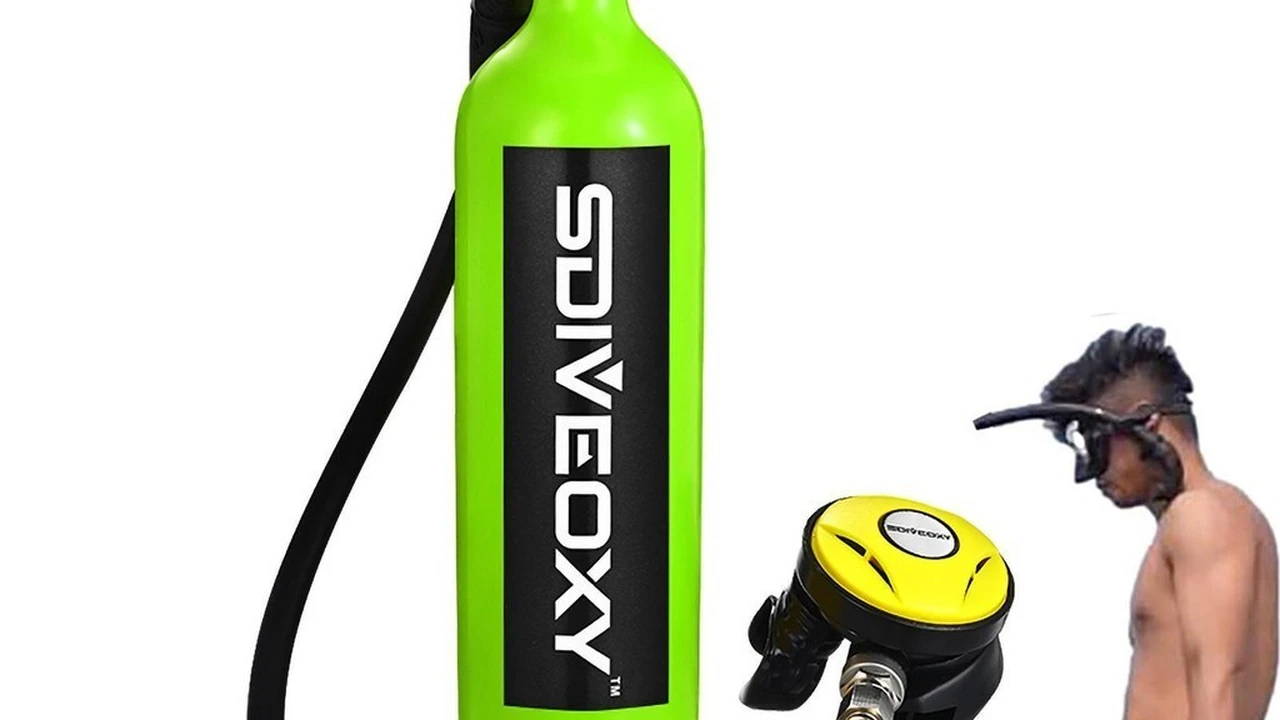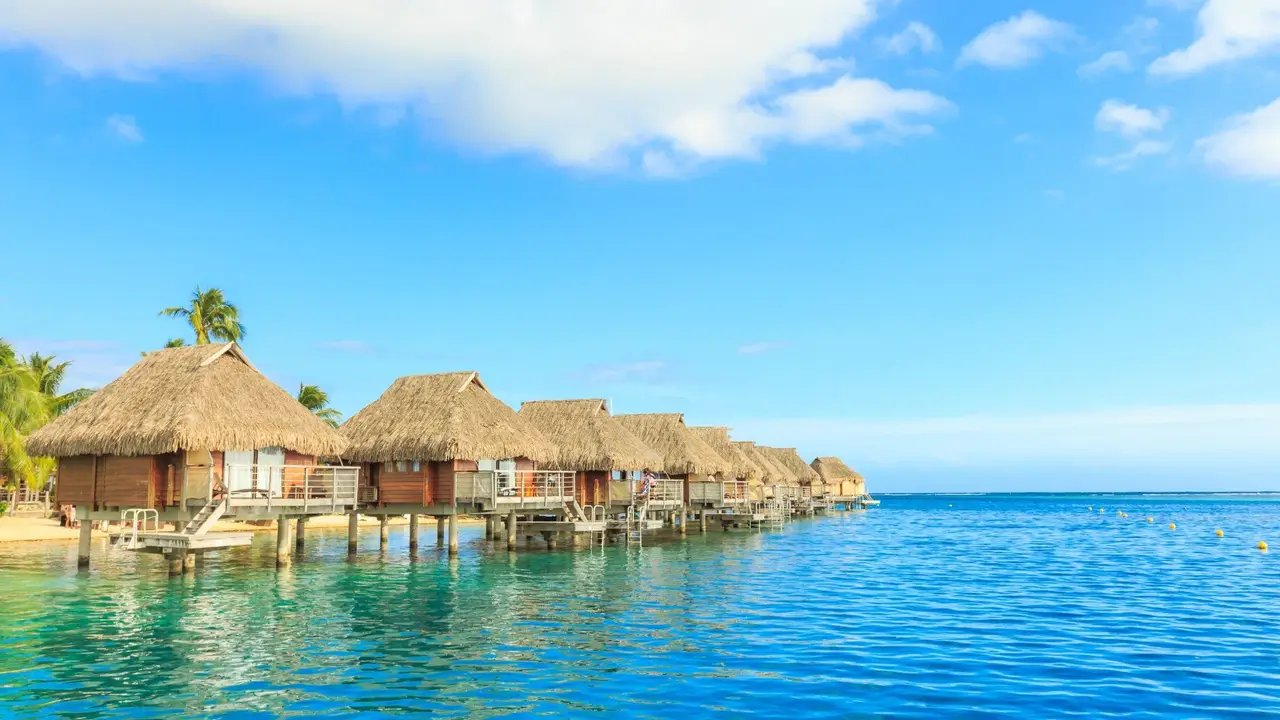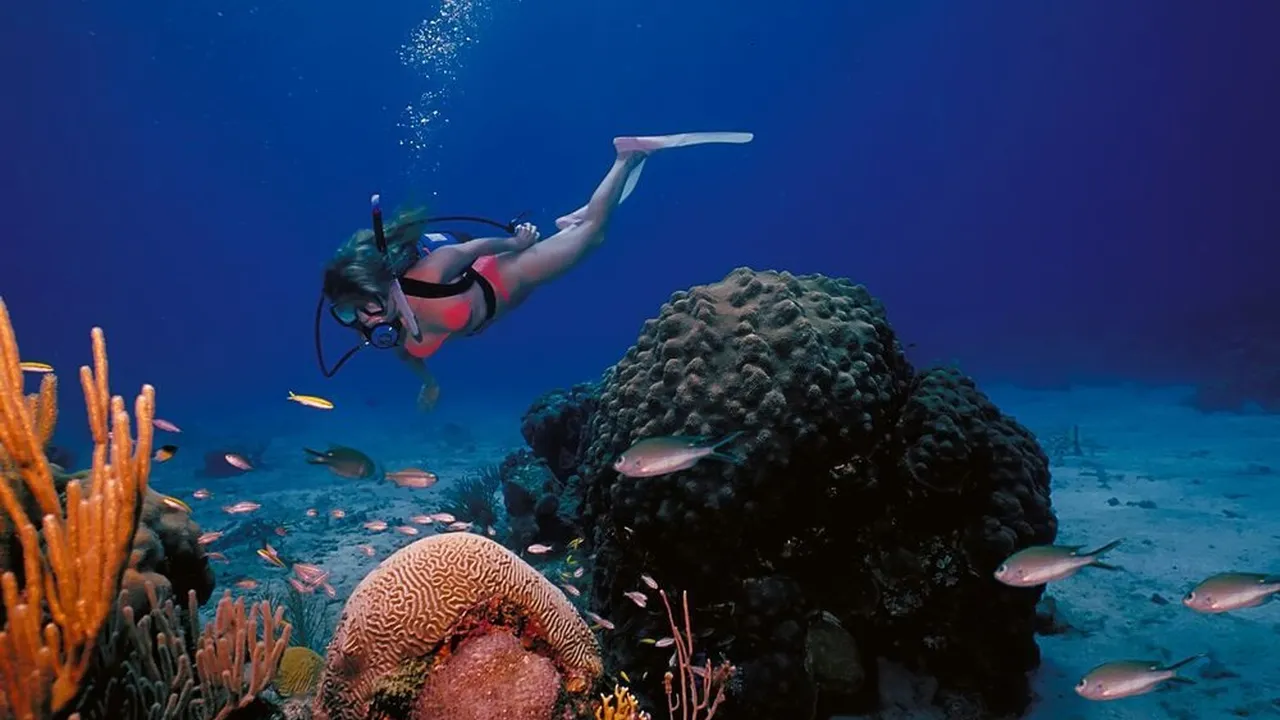Choosing the Right Scuba Diving Tank for Your Dives
Guide to selecting the appropriate scuba tank material, size, and pressure for different diving needs.

Choosing the Right Scuba Diving Tank for Your Dives
Understanding Scuba Tank Materials Aluminum vs Steel
When you're getting into scuba diving, one of the most fundamental pieces of equipment you'll encounter is the scuba tank, also known as a cylinder. It's literally your lifeline underwater, holding the compressed air you breathe. But not all tanks are created equal. The two primary materials used for scuba tanks are aluminum and steel, and each comes with its own set of characteristics that can significantly impact your diving experience. Let's dive deep into the pros and cons of each.
Aluminum Scuba Tanks
Aluminum tanks are incredibly popular, especially among recreational divers and in tropical diving destinations. They are generally lighter than steel tanks of comparable capacity when empty, which can be a big plus for travel and carrying your gear to the dive site. However, this lightness can be a double-edged sword. When full, aluminum tanks become more buoyant as you consume air during your dive. This means you'll need to carry more weight on your weight belt or in your BCD pockets to compensate for this buoyancy shift, especially towards the end of your dive. This can sometimes lead to divers feeling over-weighted at the beginning of a dive, or under-weighted at the end, making buoyancy control a bit more challenging for beginners.
A common size for aluminum tanks is the 'Aluminum 80' (AL80), which holds approximately 80 cubic feet of air at 3000 psi (207 bar). These are widely available and are often the standard rental tank at dive shops worldwide. They are also less prone to internal corrosion compared to steel tanks, which can be a benefit in humid environments or if proper drying procedures aren't always followed meticulously. However, aluminum tanks are more susceptible to dents and dings from impact, and they have a finite lifespan, typically around 15-20 years, after which they are usually retired for safety reasons.
Steel Scuba Tanks
Steel tanks, on the other hand, are known for their durability and higher pressure ratings, which means they can hold more air in a smaller volume. This is a significant advantage for divers who consume air quickly or those who want longer bottom times without carrying a physically larger tank. Steel tanks are also negatively buoyant throughout the dive, meaning they stay heavy even as you breathe down the air. This characteristic often allows divers to carry less lead weight, leading to a more streamlined and comfortable dive. For technical divers or those who prefer cold water diving with thick wetsuits or drysuits, the inherent negative buoyancy of steel tanks is a huge benefit, as it helps offset the positive buoyancy of their exposure protection.
Steel tanks come in various sizes and pressure ratings, with common options including 72, 80, 100, and 120 cubic feet, often rated for 3442 psi (237 bar) or even 3500 psi (240 bar). While heavier when empty, their higher capacity and consistent buoyancy make them a favorite among experienced divers. The main drawback of steel tanks is their susceptibility to internal rust if not properly maintained and dried. Rust can weaken the tank and contaminate the air supply. However, with proper care, steel tanks can last for many decades, often outliving aluminum tanks.
Scuba Tank Sizes and Capacities Matching Your Air Consumption
Beyond the material, the size and capacity of your scuba tank are crucial considerations. Tank capacity is typically measured in cubic feet (cu ft) in the US and liters (L) in metric regions, referring to the volume of air the tank holds at its rated pressure. The most common tank you'll encounter is the '80 cubic foot' tank, but there's a whole range of sizes to suit different needs and air consumption rates.
Common Tank Sizes and Their Uses
- Aluminum 80 (AL80): As mentioned, this is the workhorse of recreational diving. It's a good all-around choice for most divers on typical recreational dives (e.g., 40-60 feet for 45-60 minutes). It's readily available for rental and purchase.
- Aluminum 63 (AL63) or Aluminum 50 (AL50): These smaller tanks are often used for younger divers, those with very low air consumption, or as pony bottles (backup air sources). They are lighter and easier to manage for smaller individuals.
- Steel 72 (S72) or Steel 80 (S80): These are popular steel alternatives to the AL80. The S72, while nominally smaller, often holds a similar amount of usable air to an AL80 due to its higher pressure rating. The S80 steel tank will provide more air than an AL80.
- Steel 100 (S100), Steel 120 (S120), or larger: These larger steel tanks are favored by divers with high air consumption, those doing deeper or longer dives, or technical divers. They provide significantly more air, allowing for extended bottom times or multiple dives without needing a refill.
Factors Influencing Your Tank Size Choice
Your ideal tank size depends on several factors:
- Air Consumption Rate (ACR): This is perhaps the most critical factor. Your ACR, often measured in PSI per minute or bar per minute, dictates how quickly you breathe through your air. A higher ACR means you'll need a larger tank or more frequent refills. Your ACR improves with experience, better buoyancy control, and a relaxed diving style.
- Dive Depth and Duration: Deeper dives consume air faster due to increased pressure. Longer dives, naturally, require more air.
- Exposure Protection: Thicker wetsuits or drysuits can increase drag and effort, potentially increasing air consumption.
- Dive Type: Recreational dives typically use AL80s. Technical dives, wreck dives, or dives requiring decompression stops will almost always necessitate larger steel tanks or multiple tanks.
- Travel Considerations: If you travel frequently, especially by air, the weight of your tank (if you own one) can be a significant factor. Rental tanks are often the most practical solution for international dive trips.
Tank Pressure Ratings and Valve Types Optimizing Your Air Supply
Beyond material and size, understanding tank pressure ratings and valve types is essential for safe and efficient diving. These elements dictate how much air your tank can hold and how it connects to your regulator.
Pressure Ratings PSI vs Bar
Scuba tanks are rated for a maximum working pressure, which is the highest pressure to which they can be safely filled. In the US, this is typically measured in pounds per square inch (psi), while most of the rest of the world uses bar. Common pressure ratings include:
- 3000 psi (207 bar): This is the standard for most aluminum tanks (e.g., AL80).
- 3300 psi (220 bar) or 3442 psi (237 bar): These are common for high-pressure steel tanks, allowing them to hold more air in a similar physical size compared to lower-pressure tanks.
- 3500 psi (240 bar) or higher: Some specialized steel tanks can handle even higher pressures.
It's crucial never to overfill a tank beyond its rated working pressure. Overfilling can weaken the tank and pose a serious safety hazard. Always ensure your dive shop or fill station adheres to proper filling procedures.
Valve Types DIN vs Yoke
The valve on top of your tank is where your regulator attaches. There are two main types of valves:
- Yoke (International or A-Clamp) Valve: This is the more common valve type in recreational diving, especially in the US and many tropical destinations. The regulator's first stage has a clamp that fits over the valve and is secured by a screw. It's simple to use and widely compatible. However, the O-ring that seals the connection is exposed and can be more prone to extrusion if not properly seated or if the tank is over-pressurized.
- DIN (Deutsches Institut für Normung) Valve: Predominantly used in Europe, Asia, and by technical divers worldwide, the DIN valve features a threaded connection where the regulator's first stage screws directly into the tank valve. This creates a more secure and robust seal, as the O-ring is captured and protected within the connection. DIN valves are generally preferred for higher pressure tanks and offer a lower risk of O-ring extrusion. Many modern regulators come with convertible first stages that can switch between Yoke and DIN, or you can purchase adapters.
When choosing a tank or regulator, ensure compatibility between the valve type and your regulator's first stage. If you travel frequently, having a regulator that can convert between Yoke and DIN is highly convenient.
Recommendations for Specific Diving Scenarios and Product Comparisons
Now that we've covered the fundamentals, let's look at some specific scenarios and recommend some tank options, along with a comparison of popular brands and their approximate pricing.
Scenario 1: The Beginner Recreational Diver
Needs: Easy to handle, widely available, forgiving buoyancy characteristics for learning.
Recommendation: Aluminum 80 (AL80)
- Why: This is the standard for a reason. It's relatively lightweight for transport, and most dive shops will have them for rent. While it does get more buoyant as you breathe air, this is a good learning curve for buoyancy control.
- Example Products/Brands:
- Faber AL80: A very common and reliable aluminum tank. Known for durability.
- Luxfer AL80: Another industry standard, widely used and trusted.
- Approximate Price Range: $200 - $300 USD (new, empty tank). Prices can vary based on region and supplier.
- Considerations: Ensure it comes with a good quality valve (Yoke or convertible).
Scenario 2: The Experienced Recreational Diver Seeking More Bottom Time
Needs: Higher air capacity, consistent buoyancy, durable.
Recommendation: Steel 100 (S100) or Steel 120 (S120)
- Why: These tanks offer significantly more air than an AL80, allowing for longer dives or more conservative air management. Their negative buoyancy means less lead weight, leading to a more comfortable and streamlined dive.
- Example Products/Brands:
- Faber FX Series (e.g., FX100, FX120): Faber is a leading manufacturer of steel tanks, known for their high quality and consistent performance. These are often high-pressure (HP) tanks.
- Worthington HP100/HP120: Another reputable brand for high-pressure steel tanks.
- Approximate Price Range: $400 - $600 USD (new, empty tank). Steel tanks are generally more expensive than aluminum.
- Considerations: Requires diligent internal drying to prevent rust. Often comes with a DIN valve, so ensure your regulator is compatible or get an adapter.
Scenario 3: The Technical or Cold Water Diver
Needs: Maximum air capacity, consistent negative buoyancy, robust construction for demanding environments.
Recommendation: High-Pressure Steel Tanks (e.g., S120, S130, S150) or Doubles
- Why: Technical diving often involves deeper depths, longer bottom times, and decompression obligations, all of which demand substantial air supply. The inherent negative buoyancy of steel tanks is crucial for offsetting the buoyancy of drysuits and heavy exposure protection in cold water. Technical divers often use 'doubles' (two tanks manifolded together) for even greater air volume and redundancy.
- Example Products/Brands:
- Faber HP Series (e.g., HP130, HP150): These are top-tier steel tanks designed for high-pressure applications and demanding dives.
- Pressed Steel Tanks (PST) HP Series: Another strong contender in the high-pressure steel tank market.
- Approximate Price Range: $500 - $800+ USD per single tank. Doubles setups can range from $1000 - $2000+ depending on tanks and manifold.
- Considerations: These tanks are heavy! Proper training for technical diving and handling heavy gear is essential. Almost exclusively use DIN valves.
Scenario 4: The Travel-Focused Diver
Needs: Lightweight, easy to transport, readily available for rental.
Recommendation: Rely on Rental Tanks (typically AL80s)
- Why: Unless you're driving to your dive destination, flying with a scuba tank is a hassle. Airlines have strict regulations on compressed gas cylinders, and the weight adds significant baggage fees. Most dive operations worldwide have a plentiful supply of AL80s for rent.
- Considerations: While you won't own the tank, ensure your regulator is compatible with both Yoke and DIN valves, as you'll encounter both globally. A convertible regulator first stage is a wise investment for frequent travelers.
Maintenance and Care for Your Scuba Tank Ensuring Longevity and Safety
Owning a scuba tank comes with responsibilities. Proper maintenance and care are paramount for your safety and the longevity of your investment. Neglecting your tank can lead to dangerous situations or costly repairs.
Regular Inspections and Testing
- Visual Inspection (VIP): Every scuba tank requires an annual visual inspection by a certified technician. This involves emptying the tank, removing the valve, and inspecting the inside and outside for corrosion, cracks, dents, or other damage. The technician will apply a VIP sticker with the inspection date.
- Hydrostatic Test (Hydro): In addition to the annual VIP, tanks must undergo a hydrostatic test every 5 years (in most regions). This test involves filling the tank with water and pressurizing it to a much higher pressure than its working pressure to check for structural integrity and expansion. A stamp on the tank indicates the date of the last hydro test.
- Valve Service: Your tank valve should also be serviced periodically, typically during the annual VIP, to replace O-rings and check for proper function.
Proper Storage and Handling
- Store with Pressure: Always store your tank with at least 200-300 psi (15-20 bar) of air. This positive pressure prevents moisture from entering the tank and reduces the risk of internal corrosion, especially for steel tanks.
- Store Upright or Securely: Store tanks upright in a cool, dry place, away from direct sunlight or extreme temperatures. If storing horizontally, ensure they are secured to prevent rolling.
- Avoid Impacts: Treat your tank with care. Avoid dropping it or allowing it to bang against hard surfaces, as this can cause dents or structural damage.
- Keep Dry: After diving, especially with steel tanks, ensure the outside of the tank is dry before storing. If water gets inside the tank, it can lead to rust. If you suspect water has entered your tank, have it inspected immediately by a professional.
- Clean Valve Threads: Periodically clean the threads of your tank valve to ensure a good seal with your regulator.
The Future of Scuba Tanks Innovations and Trends
While the basic design of scuba tanks has remained largely unchanged for decades, there are ongoing innovations and trends that are shaping the future of air supply for divers.
Composite Tanks
While not yet widely adopted for mainstream recreational scuba diving due to cost and specific regulations, composite tanks (e.g., carbon fiber wrapped over an aluminum liner) are common in firefighting and paintball. They are significantly lighter than traditional aluminum or steel tanks. As technology advances and manufacturing costs decrease, we might see more widespread use of these ultra-light tanks in the future, especially for travel-conscious divers.
Higher Pressure Ratings and Smaller Footprints
Manufacturers are continually pushing the boundaries of material science to create tanks that can safely hold more air at higher pressures. This trend allows for smaller, more compact tanks that still deliver ample air supply, which is beneficial for streamlining and reducing drag underwater.
Integrated Tank Valves with Gauges
Some newer tank valves are starting to incorporate integrated pressure gauges or even wireless transmitters that send air pressure data directly to your dive computer. This can simplify gear setup and provide real-time air monitoring without needing a separate submersible pressure gauge (SPG) on your regulator hose.
Sustainable Manufacturing Practices
As environmental awareness grows, tank manufacturers are also looking into more sustainable production methods and materials to reduce their ecological footprint. This includes exploring recycled materials and more energy-efficient manufacturing processes.
Ultimately, choosing the right scuba tank is a personal decision based on your diving style, air consumption, travel habits, and budget. Whether you opt for a trusty aluminum 80 or a high-capacity steel tank, understanding its characteristics and committing to proper maintenance will ensure countless safe and enjoyable dives.
:max_bytes(150000):strip_icc()/277019-baked-pork-chops-with-cream-of-mushroom-soup-DDMFS-beauty-4x3-BG-7505-5762b731cf30447d9cbbbbbf387beafa.jpg)






